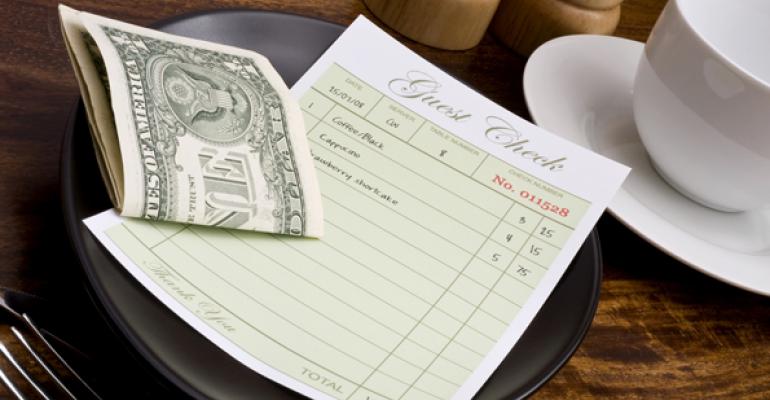Tipping is under fire all over the industry, from how the IRS counts automatic gratuities to an ongoing debate by many restaurateurs about whether the system is antiquated and counterproductive and if automatic service charges would be a better solution. Pete Wells, the New York Times restaurant critic, recently wrote the practice of tipping is “irrational, outdated, ineffective, confusing, prone to abuse and sometimes discriminatory.”
This story is about none of that. The Cornell Center for Hospitality Research, instead, has found an unusual and insightful benefit from the practice: Tip percentages are an accurate predictor of future restaurant sales. Yes, that’s the takeaway from a new study—Tips Predict Restaurant Sales—published by Cornell professors Michael Lynn and Andrey D. Ukhov.
“Tip percentages in one month accurately predicted food sales levels in the following month,” says Lynn of their research that analyzed seven years of monthly charge-card sales and tip data for a multi-regional restaurant chain in the U.S.
The study found that when the average tip percentage increased by one point (from 14 percent to 15 percent, for example), gross sales increased $1.3 million for the 10-unit chain. The authors don’t believe that specific result can be used directly to forecast other restaurants’ sales, because of regional and restaurant differences, but the individual relationship between tips and future sales is one that would translate to others.
Although the study notes a definitive link between the two, the authors couldn’t answer exactly why. They theorize, smartly so, that service quality affects current tip levels and intentions to return. And secondly, being that tips are voluntary payments determined by consumers after services have been received, they’re arguably the most discretionary of all consumer expenditures. Meaning that tips are the ultimate indicator of consumer sentiment, and future retail sales growth.
Think about how useful this data could be. Sales forecasts are a critical component to almost any restaurant. For managers, they’re critical to better estimate the amounts of food, beverage, supplies and labor needed. For owners, they can help secure loans, entice investors and set benchmarks to measure and reward managers and other workers.
Many restaurants are already using a business intelligence or forecasting tool to plan for the future. Why not add tipping data into the mix, and if possible, retroactively check your monthly tip percentage against monthly sales to see if a similar link can be found. If so, start monitoring this going forward and putting the information to use.
At least as long your business continues to accept tips.





